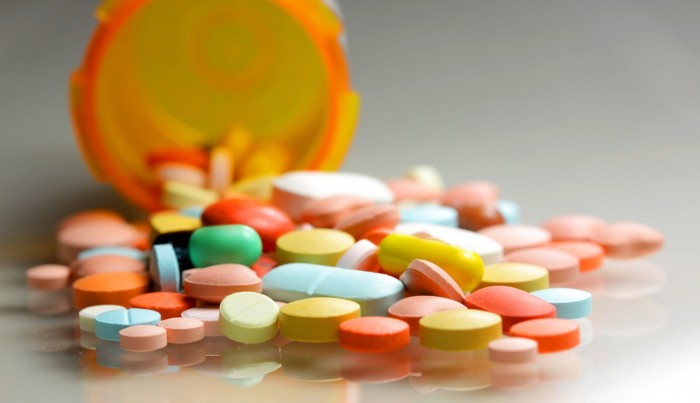Providers Who Accept Pharma Gifts Prescribe More Expensive Drugs
Average costs per claim were $50 more for providers who accepted pharmaceutical gifts and one of three prescriptions was for branded drugs, a study found.

Source: Thinkstock
- Providers in the DC area who received gifts from the pharmaceutical industry tended to prescribe more drugs per patient, including more expensive, branded medications, than their peers who did not accept gifts, a recent PLoS One study showed.
“Our study confirms and expands upon previous work showing that industry gifts are associated with more expensive prescriptions and more branded prescriptions,” wrote researchers from Georgetown University Medical Center and George Washington University Milken Institute School of Public Health. “The impact of pharmaceutical marketing could have a profound effect on healthcare costs.”
Researchers examined gift acceptance and prescribing habits of over 2,800 Medicare Part prescribers in DC, including advanced practice providers, physicians, and specialists. The study focused on the DC area because of the region’s AccessRx Program, which tracks pharmaceutical spending for a wide range of providers. DC is also the only jurisdiction that monitors pharmaceutical advertising and salaries for drug company employees.
The analysis revealed that about 39 percent of providers accepted gifts totaling about $3.9 million in 2013. Researchers found the following key differences between gift and non-gift recipients:
• Providers who accepted pharmaceutical gifts had an average of 892 claims each in 2013, while non-gift recipients averaged just 389 claims per provider
• Providers who received gifts submitted significantly more claims per patient, with gift recipients submitting an average of 8.8 claims per patient compared to just 6.5 claims per patient for non-gift recipients
• The average cost per claim was $135 among providers who accepted gifts versus $85 for non-gift recipients
• One of three prescriptions written by a gift recipient was for a branded medication, whereas one of four prescriptions written by a non-gift recipient was for a branded drug
Additionally, pharmaceutical gifts of all sizes were associated with increased prescription orders, even those for expensive, branded drugs.
The 798 providers who accepted small gifts of less than $500 per year reported higher average costs per claim than non-gift recipients. Their cost per claim was $114 on average versus just $85 for providers without gifts.
Providers receiving small gifts also prescribed more branded drugs. Approximately 30.3 percent of written prescriptions from small gift recipients were for branded medications compared to 25.7 percent for non-gift recipients.
Researchers added that as gift value increased so did the effect on prescribing patterns. Providers who received gifts of $500 or more per year had higher costs per claim ($189) and a greater proportion of prescribed branded drugs (39.9 percent) compared to both small gift recipients and non-gift recipients.
The study also showed that the impact on prescribing habits was not limited to physicians.
Physician assistants and nurse practitioners who accepted pharmaceutical gifts also reported greater average costs per claim. Physician assistants who accepted pharmaceutical gifts had average costs of $213 versus just $63 for physician assistants who did not receive gifts.
For nurse practitioners, the average costs per claim were $180 for those who accepted gifts and $86 for those who did not.
Gift acceptance was also linked to additional branded drug prescriptions among physician assistants. About 30 percent of claims were for branded drugs for physician assistants who were gift recipients. That proportion dropped to 17 percent for physician assistants who did not accept gifts.
Nurse practitioners who received gifts did not have a significantly higher proportion of branded claims than their peers who did not accept gifts.
Researchers noted that the study’s findings did not should direct causation between pharmaceutical gift acceptance and higher healthcare costs. However, the study does indicate that providers who accept these gifts are contributing to growing costs and stakeholders should address the issue.
The issue of pharmaceutical gifts leading to more expensive prescriptions is particularly a concern for the primary care space. About one-half of all office-based physicians are primary care providers and internal medicine and family medicine are the largest specialties.
Internists and family medicine physician who received gifts reported higher average costs per claim and proportion of branded claims.
Nurse practitioners and physician assistants are also key players in primary care. Both provider types also had greater average costs per claim if the provider accepted gifts.
Pediatricians were the only primary care provider type that did not have higher average costs per claim and proportion of branded drugs.
Researchers also pointed out that care quality may be affected by pharmaceutical gifts. Providers in two studies believed that they could extract educational information from pharmaceutical company representatives. However, the providers could not always identify correct versus incorrect information when tested.
Providers also thought that they weighed scientific materials more than biased promotional materials. But an analysis showed that provider beliefs on two common drugs were based more on promotional materials.
To ensure pharmaceutical gifts do not result in higher healthcare costs, researchers recommended that organizations educate their providers on pharmaceutical marketing and prescribing patterns.
They also suggested that federal and state agencies create and maintain reporting standards for industry marketing activities.
